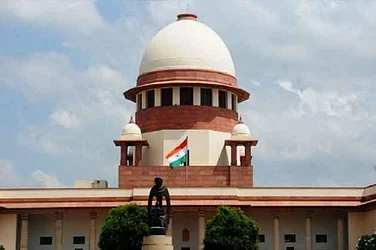The Ministry of Road Transport and Highways has mandated the use of high-tensile stainless steel in bridge construction. The mandate extends to national highways and central projects near coastal regions that are prone to severe marine exposure. This mandate comes in response to the spate of bridge collapses that occurred due to extreme weather conditions. With climate change intensifying extreme weather events, the ministry recognizes the urgent need to broaden material specifications beyond previously high-risk zones.
The new mandate, as outlined in Schedule D, emphasizes that all materials and construction operations for road and bridge projects must adhere to the Manual of Specifications and Standards for two-lane highways set by the Indian Road Congress (IRC) and ministry guidelines. This directive builds on the 2017 initiative promoting stainless steel for reinforced concrete bridges in areas prone to extreme environmental conditions, such as regions within 15 km of the sea or creeks.
The mandate requires state and central road construction agencies to integrate these updated standards into Schedule D of their contracts, impacting key organizations such as the National Highways Authority of India (NHAI), the National Highways and Infrastructure Development Corporation of India (NHIDCL), the Border Roads Organisation (BRO), and state public works departments. Union Minister Nitin Gadkari, a proponent of using rust-resistant metals for coastal infrastructure, underscored the significance of this regulation in enhancing the durability of India's critical road networks.
This move comes in the wake of intermittent outrage in the country over bridge collapse incidents, particularly in Bihar where multiple such incidents have taken place within months.
Bihar announces construction of thousand new bridges
After a series of bridge collapses in the state, the Bihar government has decided to construct around 1000 new small bridges in rural areas where the incidents of such collapses happened recently. The decisive move to tackle the persistent problem that has plagued Bihar was announced during a cabinet meeting chaired by Chief Minister Nitish Kumar on September 10.
Bihar government’s new scheme, ‘Mukhyamantri Gramin Setu Nirman Yojana’ (MGSNY), aims to bolster the state’s rural infrastructure by focusing on constructing small bridges up to 100 meters in length. The Rural Works Department (RWD) will oversee the construction, while the Bihar Rajya Pul Nirman Nigam Limited will handle project execution.
Rakesh Kumar, General Secretary of Bihar Engineering Services Association (BESA), while speaking to Outlook India said that the government is taking steps to make sure the new bridges will be durable and strong. He said that inventory is being made and health monitoring has been done. An audit is also underway.
While talking about the bridge collapses, Kumar highlighted the case of the Araria bridge collapse and said that it was due to the excavation of sand in the area.
Kumar also pointed out the lack of human resources in the department. He said that the department depends on outsourcing despite there being vacancies. “The advanced planning of the department should be strengthened and experts should be responsible for their field of work,” he said.
In addition to the MGSNY, the Bihar cabinet has approved amendments to the Mukhya Mantri Gramin Sadak Unnayan Yojana. This scheme will ensure the development and repair of all-weather roads linking rural habitations, further enhancing the state's infrastructure network. The focus will be on both building new roads and repairing those in urgent need of attention.
Recent cases of bridge collapse in India
The collapse of bridges has been a recurring issue in Bihar, affecting both safety and connectivity in rural areas. For instance, the 136-year-old British-era bridge in Patna and several under-construction bridges in Saharsa and Nalanda have all failed under various circumstances, ranging from heavy rainfall to poor construction practices.
Most recently, a portion of an under-construction bridge, the Aguwani-Sultanganj bridge, in the Bhagalpur district crashed into the river Ganga on August 17. This was the third incident of collapse of this bridge which has been under construction since 2014.
The collapse of the Aguwani-Sultanganj bridge marked the 16th incident of bridge collapse in Bihar since June 2024.
Before this incident, two more collapses happened in August in Bihar. A bridge collapsed in Paharpur village in Vaishali district on August 10 and another in Katihar district on August 8.
Bihar had earlier reported the collapse of at least three bridges in the Saran district in the first week of June itself. Between June and July, several more such incidents were reported in districts including Siwan, Madhubani, Araria, East Champaran, and Kishanganj. Eventually, seven bridges collapsed in just 15 days.
These escalating incidents of bridge collapses eventually prompted an immediate investigation by setting up a high-level committee by the state government. The Supreme Court also directed the Bihar government for a comprehensive structural audit of all existing and under-construction bridges in the state. The directive came in response to a petition that demanded that any structurally weak bridge should be demolished or retrofitted.
Apart from Bihar, India has witnessed major bridge collapses in other states as well. In August 2023, an under-construction railway bridge collapsed in Sairang town of Mizoram. According to reports, around 26 people were killed in that tragedy.
In October 2022, Gujarat’s Morbi bridge collapse stood out to be the biggest collapse after it took lives of over 140 people.





























